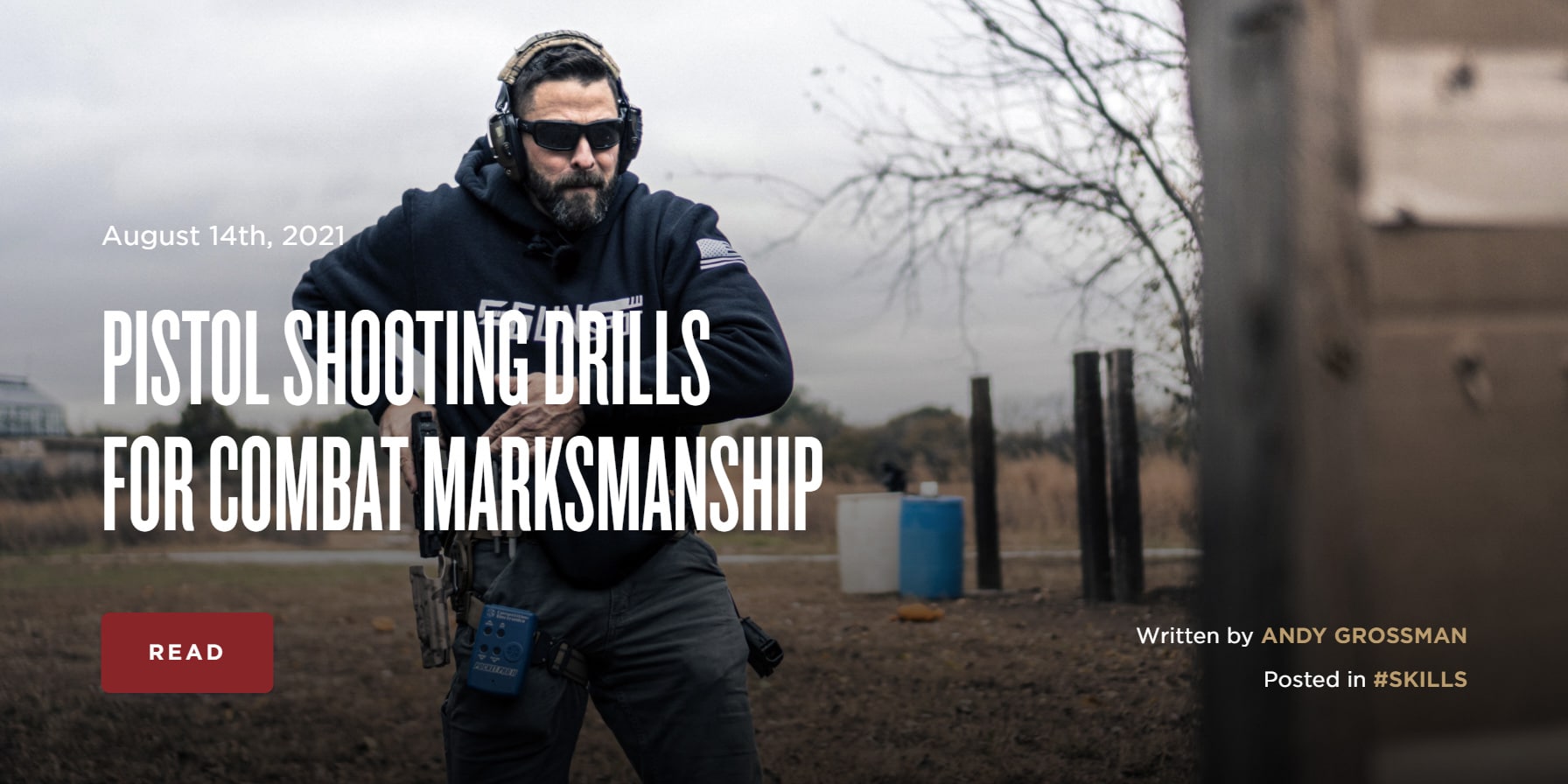Indoor range rules and drills do create conflicting practice.
@KillerFord1977 excellently addressed the physical aspects of indoor public range adaptations, so I'll tackle the mindset aspect instead.

Most indoor ranges, for public shooting sessions, will not allow drawing from the holster or rapid-fire (and as
@KillerFord1977 noted, double-taps/hammer pairs - or even controlled pairs - can be up for debate) - but instead of seeing this as being less-than-optimal for your draw-and-shoot or rapid-fire/close-distance defensive shooting practice, consider re-framing those limitations, instead.
To begin with, a quick question: when you are at home, do you always wear a holster, or are you mostly or even just occasionally without a holstered weapon on your body?

If so, then being able to confidently and efficiently come up to-target from the indoor-ready, low-ready, or chest/"high"-compressed ready* (or even retention) can be just as important a skill as it is to draw the pistol and to bring it to-bear on the target. Think about it even more, though, and one quickly realizes that if he/she were to be actively engaged in CQB, then it is rather less likely that the engagement will occur from the draw, versus from these ready-positions.
[ *
Note that care will need to be given to muzzle-orientation to stay within range rules: SUL, high-port, as well as other muzzle-aversion indices may not be possible. ]
Similarly, where range-rules stipulate "no rapid fire," and that successive shots may take place no faster than within ~1 second, we can again alter our training goals -and even our outcome measures- to match.
For example, in the canonical Hackthorn/Vickers "The Test" (aka the "10-10-10"), the shooter starts from the draw and attempts 10 shots on a B-8 Repair Center at 10 yards, with the goal of completing it in 10 seconds. Typically, the metric is one of score versus time, where when scores are the same between two shooters, the one that comes in at the lower time "wins." At a range with rules restricting drawing from one's holster as well as prohibiting rapid-fire shots, the shooter can instead start the drill from a ready-position that does not violate range-rules, or even pick up the gun from the shooting table/bench (again, a good skill to practice for the home/hotel environment), and could aim to discharge the 10th round at precisely the moment the shot timer rings the 10-second par time (since most audible shot-timers will not function well to register the shooter's string at noisy -or even outdoor- ranges).
An example of how this may play out the in the real world can be seen when we take a look at the following incident analysis published just yesterday by Claude Werner:
Body Worn Video (BWV) not only has value for analysis of Use of Force, it also can be used as a shooting analysis tool. By looking at a BWV in conjunction the results of a subsequent investigation,…

tacticalprofessor.wordpress.com
One could utilize the one-second-per-shot pause to simulate a rapid assessment of the threat in-between follow-up shots...or to even insure a better sight package - which, as Werner pointed out (the latter he tied back to the infamous Gramins/Maddox shooting), are considerations that "Officer A" likely would have benefitted from.
All this, of-course, is not to suggest that one shouldn't practice shots at rapid cadences, at-cyclic, but rather that we should both realize that not all defensive shoots require a "NSR" of shots in rapid succession in order to successfully shut-down the threat, and that we can even utilize range-limitations to our advantage.

The gunfighting tenant of "speed up when you can, slow down when you must" actually adapts very well to the limitations that are common today at indoor public ranges, if we only use a bit of our imagination sometimes, to re-orient our favorite fast-and-furious drills.





